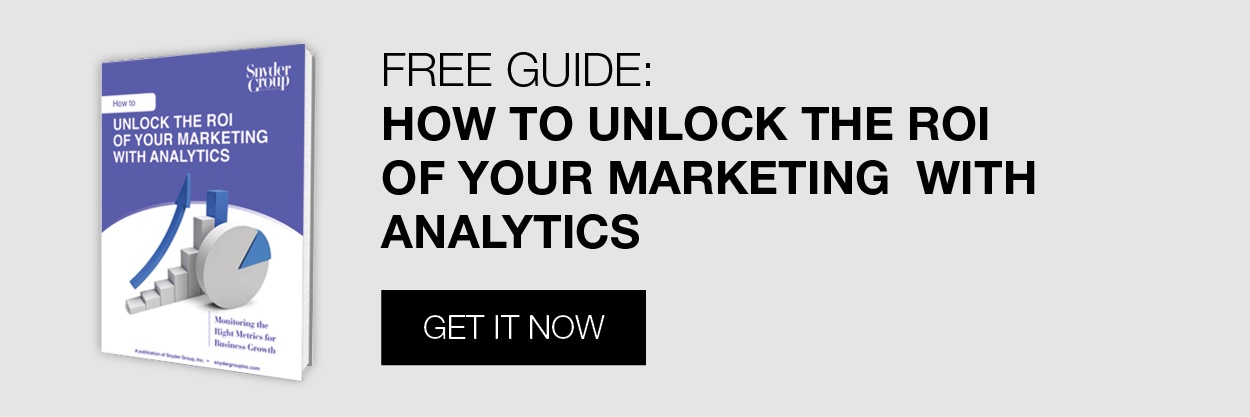Within the realm of marketing automation, email marketing, and inbound marketing, the old "Rule of Seven" still holds strong. This marketing plan rule came from the golden age of advertising but retains its strength today. The customer needs at least seven exposures to your brand before they may decide to buy anything from you. Use this logic to help strengthen your bottom line.
Nurture Customer Relationships in the Digital Age
Considering all of the changes that have taken place around the way we consume information, the amount of required exposure or touch-points has skyrocketed. As you develop your nurturing goals and execute them, keep that in mind.
You wouldn't be ready to buy into something after seeing one ad, because you want to trust that company first. High-quality monthly emails are widely seen as the "goldilocks" of email marketing intervals. Simple and well-timed emails provide just the right amount of exposure without being a nuisance.
Automate Email Marketing
In order to lead customers through the engagement and relationship-building stages, you need a great lead nurturing campaign. For business-to-consumer companies, these typically run for around 60 days (or longer if your content is engaging/long enough). Some examples are home goods or real estate whereby the customer needs more time. For business-to-business industries such as manufacturing or software with longer sales times, these can run months.
Include in your campaign at least three emails which will be made up of CTAs (Calls-To-Action) and targeted content. The CTAs should be obvious and highly visible so it's easy for the potential customer to react quickly after considering what you're offering. This will nurture the relationship long term, save you time, and increase your conversion rate.
Lead Generation
Marketing automation is known to generate lots of leads if done right. But how does lead generation work? You set up certain rules to not only ensure consistency but also effectively direct your email campaign to the inboxes and eyes of large numbers of people.
Let's say someone visits your company's website and subsequently signs up to be on an email list. When this happens, they'll be moved through a sales funnel according to what actions they take. If they open the marketing email and click a link, it could send them an email that directs them to a specific landing page. If no emails are opened, they could be sent one last email.
A Marketing Plan for Your Bottom Line
The hard sell is dead and gone, so don't get into the mindset that in-your-face sales will work. Who knows, it may return someday, but for now, it's the soft sell that’s proven to work best. Most of today's customers dislike pushy salespeople and have a hard time trusting them right off the bat.
They'll avoid it by shopping online, taking their time during decision-making, and acting when they feel confident. Giving them this space and respect will benefit your bottom line for years to come. The fact that it's a buyer's market in this way is great for companies whose products or services offer genuine quality and value. By curating offerings for them, they'll appreciate the effort and trust your company for its ability to provide relevant information, narrow down their choices and save them time.
Targeted Inbound Marketing Content
Don't just help potential customers, know them. By using behavior information along with contact data, you can expose them to relevant content. One email alone will have very little if any, effect on your sales conversions. Play the long game.
Customer relationship management is a dance. Use metrics to analyze conversion rates and never let it slide or you'll end up flat on your face in the spam folder, unlikely to be seen again. Maintain your client's trust and interest by keeping inbound marketing fresh, relevant, and always improving.
Never badger potential customers. During a normal lead nurture campaign, you'll send an email out once or twice over a two-week period. To avoid being marked as spam or having them unsubscribe, create a marketing plan that prevents overstaying your welcome or annoying them.
Contacts Segmentation
Analyze your lead's engagement during the first campaign. By getting to know them, you can move on to relevant, and highly personalized content, regularly. Stay at the top of their mind so they think of you when you're needed at the time of purchase by segmenting further and further.
While there are several kinds of lead nurture strategies, the ones that work are based on an understanding of who this lead is. How does your product benefit them? Why will they need you in the future? You'll get good at reaching each type at the right time by using automation.
Welcome Messages & Email Marketing Plans
At the beginning of any customer relationship, there must have been some engagement, whether it was a purchase or a subscription to your newsletter, etc. That first conversation should invite them into a long-term relationship. Put yourself in their shoes and think about what type of tone you would appreciate in such a message.
Here's an example that shows a simple welcome campaign that packs a punch. It's powerful and distilled down to the essentials.
- Email upon purchase
- Immediate welcome email
- One-week follow-up email
Build and expand on this however you see fit, from short-term campaigns to long-term monster campaigns.
The first email serves as a friendly introduction. Build trust with the help of that second email which assures the customer that you're there for them anytime. You can also invite them into various conversations to help you cross-sell through deeper, high-quality customer knowledge.
Long Term Nurture Email Marketing
The aim is to develop client relationships that last long term. To do this right, you'll have to consider them a constant entity. They'll be a living part of your business plan, always evolving and improving with constant care and revision.
Your initial welcome nurture campaign will be followed up with a scheduled nurture email series. This is needed to engage your client. Offer extra points, repurposed blog content, and/or newsletters. Try offering product service updates, and news on the company to stay at the top of their minds. Small businesses, especially, need efficiency at every level.
Here are the elements of a regular, weekly, long-term follow-up email:
- Customer stories
- FAQ digests
- Exclusive content
- Inside info
- Product updates
Provide them with valuable, relevant high-quality content and deliver it in short bursts. Try never to send more than one email per week. Don't make them feel they're being manipulated, rather, let them engage out of genuine interest.
Targeted Promotions Work!
You need a social media presence that hits home with a lot of people. Remember to keep a consistent set of styles over all types of promotional ads, emails, social media image posts, etc. Remember to update them all within a short time span of each other so you don't appear to clients as lazy or indifferent about customer service.
Check out this hugely effective social media campaign we ran for Roadhouse Brewing Company in Jackson Hole, Wyoming. We successfully helped them seed many new market leads prior to a big launch by running a "Win Free Beer for a Year" sweepstakes. In this way, 91,768 customers were reached!
If you aim to entertain customers with fun, engaging content, you can give a lovable personality to the brand. Tell stories and provide helpful tips and information tailored to your client base. Use A/B testing, to track the success of each version. By testing content, and, in turn, segmenting effectively, you'll be on your way to earning their love for your brand.
Become a Thought Leader
Never give up on becoming a thought leader in your clients' minds. You'll be the one that pops into their heads when the need arises for a product or service you offer. Constantly tailor your content because people experience life changes and behavior that could throw off your relevance.
Here at Snyder Group, we take every opportunity to perfect the process and delight your entire database. We have the passion it takes to keep current with the trends and exceed expectations. We'll nurture at every stage of your sales funnel, improve engagement with your contacts, and help you gather new ones.
Final Words on Nurturing Strategies
The average person requires a lot of exposure to a brand to become interested. Build trust and stay relevant with tailored email marketing. Your emails should be personalized, engaging, timely, and use marketing automation. Segmentation creates effective inbound marketing campaigns and increases your bottom line.
You don't need any special strategy or coding experience to benefit from increased conversions! Schedule your no-cost, no-obligation, 30-minute marketing assessment today!

